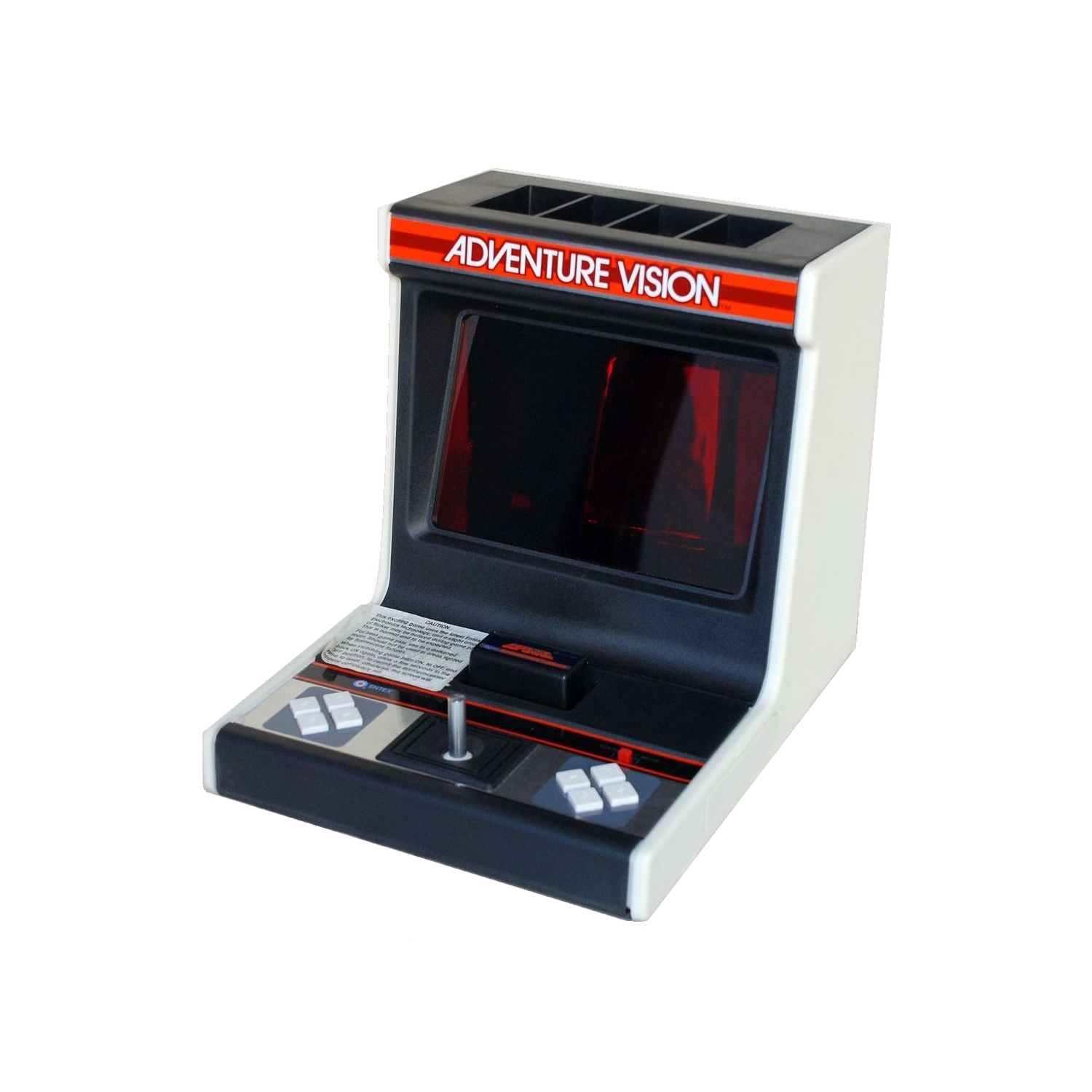|
History
After the release of the Select-A-Game, Entex was looking for new ideas. They wanted to release something as close as possible to the arcade experience. Entex tested a CRT concept but was abandoned as it was too expensive. LCD was also considered, but were rejected has the technology was not advanced enough at the time. During on of the management meeting, Mike Round, one of the project managers for Entex, mentioned the rotating disk idea that Robert McCaslin, a close collaborator of Entex had.
Entex had an open door policy and every Thursday, they would allow inventors and toy makers to come present their product. Bob was one of these toy makers and had licensed multiple invention to Entex.
By the time Mike met with Robert, he had already evolved the idea of the rotating mirror in the base concept of Adventure Vision. The concept was immediately licensed by Entex and a team was assembled to deliver the project. The team included Steve Meadows, a employee of Robert McCaslin who designed the electronics and programmed the software. Larry Karr and Andy Barber were both assign to the sound chip design. Ortega Orr was tasked to create the casing. The most critical part of the system was the rotating mechanism so Entex recruited Don Baker, the project engineer on the A6 Gunship.
Entex put a lot of effort in the design of the Adventure Vision as they were sure this could be their next big release. The innovative display concept of the Adventure Vision also opened a door to expend this use. To this end, the Adventure Vision had an expansion port and they planned to build a home computer module.
Adventure Vision
In 1982, the Adventure Vision was finally released at a price of $79.95. Only 10,000 units were made of the systems at first. The Adventure Vision had a slow start and was put on the back-burner by Entex. By the time the console started to receive the recognition it deserves, Entex was dealing with serious business issue and never got to produce more units.
Games
- Defender (pack-in game) – 10,000 units
- Turtles (#6076) – 1,000 units
- Super Cobra (#6077) – 1,000 units
- Space Force (#6078) – 1,000 units
Technical Reference
The display is created by using a single vertical column of 40 LEDs, and a rotating mirror. By flashing the led and rotating the mirror very rapidly, the system was able to simulate a resolution of 150×40 resolution.
The system was one of the first to have a dedicated sound-chips and also had an audio-jack connector for a headphone.

